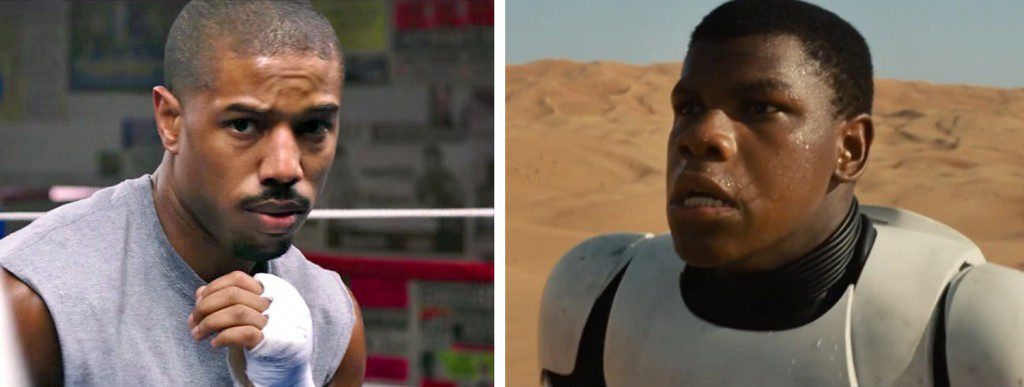WARNING!: If you have not seen T2 and wish to keep its story a surprise, do not read any further!
 Terminator 2: Judgment Day opened to big box office returns and a great deal of hullabaloo over its precedent-shattering special effects. A few of you have even confessed to paying to see the spectacle a second or third time within a week of its opening. It’s rumoured to have cost over $100 million to produce, and there’s no doubt that the money is on the screen (unlike recent cheap big-budget films like Batman). Nobody seems to mind that the sequel is terribly inconsistent with the original film, both in its concept of time-travel and in its overall tone.
Terminator 2: Judgment Day opened to big box office returns and a great deal of hullabaloo over its precedent-shattering special effects. A few of you have even confessed to paying to see the spectacle a second or third time within a week of its opening. It’s rumoured to have cost over $100 million to produce, and there’s no doubt that the money is on the screen (unlike recent cheap big-budget films like Batman). Nobody seems to mind that the sequel is terribly inconsistent with the original film, both in its concept of time-travel and in its overall tone.
Time travel inconsistencies
T2 seems to be saying that someone who has come back from the future can change the future he just came from, even prevent it from ever happening. For this theory to make any sense, though, the original future must still exist, otherwise how could there be a person from the future to change it?
Therefore we would have two different timelines branching off from the point where our time-traveller arrived. In the case of T2, the first would be the timeline in which Cyberdyne finished developing machines that happened to take over the world and create the Terminator, and the other would be the timeline in which Cyberdyne was blown up by the Terminator after it had come back.
But how does this affect the first movie? Before the first Terminator had ever been sent back, there must have been no time travel, therefore Cyberdyne developed its technology without a Terminator component in its possession. And, assuming that the film’s Sarah Connor was his mother, John’s father would have been someone completely other than Kyle; indeed, the John of Timeline #1 was an entirely different person from the one in T2. There is no guarantee that T2‘s kid would ever develop world-leadership potential.
 Unfortunately, one element of the first film flies in the face of the multiple-timeline theorem, and that is The Photo. According to the first film, the picture of Sarah that John gave to Kyle existed in the original timeline and was what motivated Kyle to come back to protect Sarah. So far so good, except that the ending of the first film shows the photo originated in the second timeline, so how could it have possibly existed in the first one? Well, quite simply, it couldn’t have — it’s a plot device that worked very well in the first film, where a Fate of sorts seemed to affirm, rather than change, the future … but it simply doesn’t fit into the concept of time that T2 is based on!
Unfortunately, one element of the first film flies in the face of the multiple-timeline theorem, and that is The Photo. According to the first film, the picture of Sarah that John gave to Kyle existed in the original timeline and was what motivated Kyle to come back to protect Sarah. So far so good, except that the ending of the first film shows the photo originated in the second timeline, so how could it have possibly existed in the first one? Well, quite simply, it couldn’t have — it’s a plot device that worked very well in the first film, where a Fate of sorts seemed to affirm, rather than change, the future … but it simply doesn’t fit into the concept of time that T2 is based on!
There is also the problem of which timeline the second Terminator would have come back to in T2. If the T-1000 was a creation of Timeline #1, why would it end up over on Timeline #2? Perhaps it came from the future of Timeline #2, which had turned out pretty much like Timeline #1, even though a completely different John Connor was leading the humans, and the T-1000 came from Timeline #2. But then again, why should John send anyone back in time to protect anyone? He’d already survived and succeeded in defeating the machines, hadn’t he?
Its refusal to make any sense makes it impossible to suspend one’s disbelief during T2. On this level, at least, T2 loses its grip on the audience, and is less captivating than its predecessor.
Arnold, the Pet Cyborg
More significantly, what made this a weaker film than the original is Arnold Schwarzenegger himself, and I’m not just referring to the switcheroo that made his character a good guy. I actually liked the novelty of seeing Arnold protect John and Sarah Connor, and especially their panicked reactions on first seeing him.
However, most of that tension was dealt with in the first half of the film, and when that novelty wore off, the second half became a glorified countdown to the “Godzilla vs. King Kong” ending.
Another weak narrative point: Arnold remained in the story right to the end! Kyle had to die in the first film so that Sarah would have to face the Terminator on her own and find the Inner Strength And Courage needed to defeat the thing. Whether archetype or cliché, all heroes pass through this phase, just as Luke Skywalker blew up the Death Star after his droid shorted out, Spock saved the Enterprise in The Wrath of Khan all by his lonesome, and every Stephen King protagonist has had to face his/her nemesis alone once the Wise Old Man is killed 15 minutes before the movie’s end. Arnold, by sticking around, saps the heroism from Sarah Connor, but has nothing to show for it himself since he never goes through a period of heroic self-discovery himself.
And because Arnold is always there to help out, it becomes his story, whereas the first film was quite arguably Sarah’s story. And what sort of protagonist is he? Virtually invincible, a better match for the T-1000 than Kyle ever was for Arnold, as well as the “perfect father” for John (and also a better mother than Sarah, for that matter). He never kills anyone, so he’s much less imposing than before, and even the profanity he picks up is quite lamer. In the words of Mr Schwarzenegger himself, this film features a “kinder, gentler Terminator”.
But why look to Arnold for menace when it’s supposed to lie with the villain? And just what sort of villain is the T-1000? For one thing, he doesn’t look so menacing, which isn’t so bad in itself, but he never does anything so menacing either.
In the first film, Arnold wasted a police precinct and half a nightclub; in T2, the T-1000 acts in more isolated areas and is much less of a threat to the innocent bystander. But even Arnold’s isolated moments in the first film packed a certain punch; it was then that he would do away with Sarah’s mother, her roommate, and her roommate’s boyfriend — in other words, the people that Sarah cared about and whose deaths we felt. Even the victims who didn’t know Sarah well were characters we liked, such as those in the precinct. The T-1000, on the other hand, doesn’t off one single character that we ever admired. We never sense that anyone will feel the loss, so why should we?
Conclusion
Why does the sequel try to be so politically correct, and so darn sensitive? Perhaps James Cameron needed to justify his gargantuan spending by appealing to a much wider audience than the original film’s cult following.
The first Terminator was a B-movie with a brain. The sequel, unfortunately, is just a B-movie with a big budget.
— A version of this article first appeared in the Autumn 1991 issue of the Jot & Tittle.












